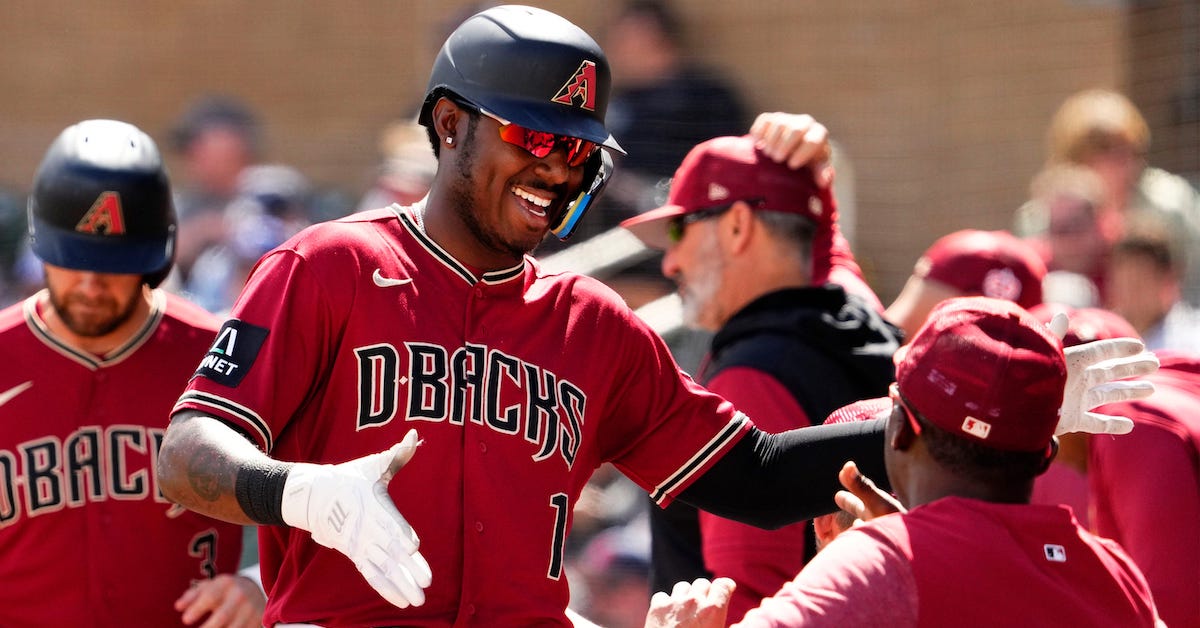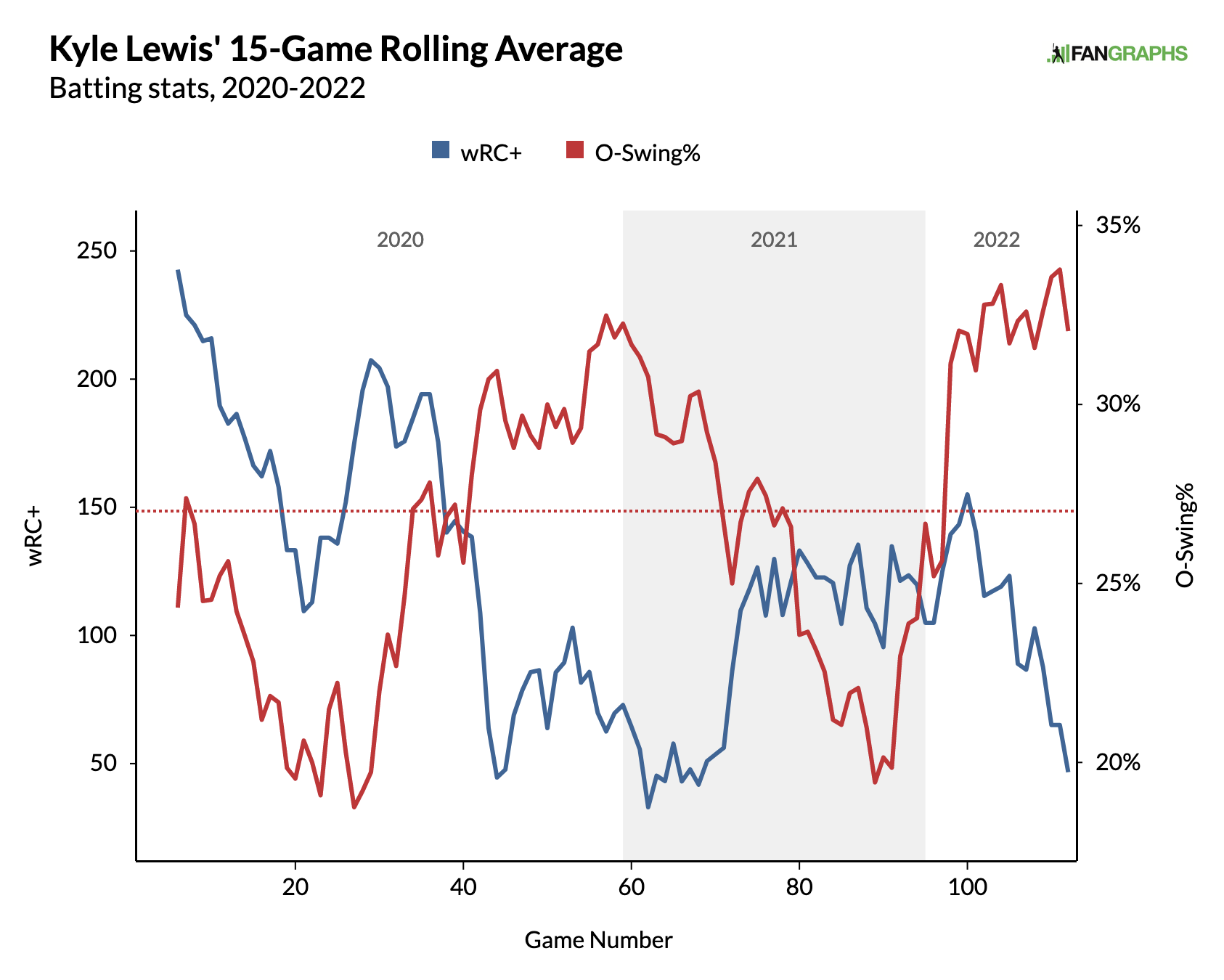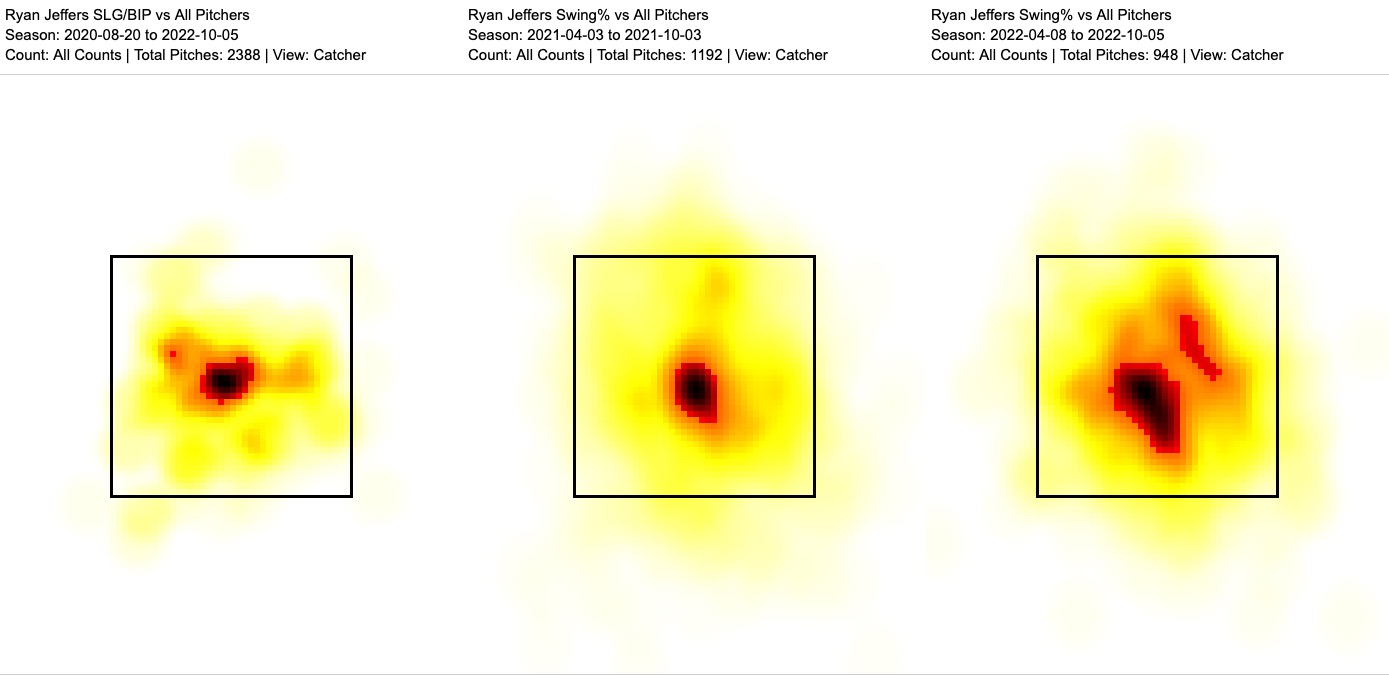[ad_1]

On Monday, we wrote about three interesting players who had been placing up huge exit velocity numbers in spring coaching. In the present day we’ll spotlight two extra gamers in depth, and contact briefly on a two extra. Ben Clemens will likely be writing about Ryan McMahon, who occurs to be the spring coaching exit velocity champion, tomorrow.
Now that spring coaching is over, yow will discover the ultimate exit velocity leaderboard on the backside of this text. It’s received some notable names: Ke’Bryan Hayes is crushing the ball, however he’s nonetheless not elevating it; Kris Bryant is wholesome and mashing; Nolan Gorman is demonstrating that Jordan Walker isn’t the one thrilling prospect in St. Louis; Christian Walker is making final 12 months’s breakout look extra sustainable, rocket by rocket; and Zac Veen is giving Colorado followers one thing, something to sit up for.
When you learn Monday’s article, you doubtless observed that the featured gamers shared the same profile. A listing of gamers who can demolish a baseball however aren’t established stars goes to be heavy on strikeouts and problematically excessive groundball charges. You must count on that development to proceed as we speak.
Kyle Lewis
When you’re going to select one participant to root for on this article, make it Kyle Lewis. The 27-year-old has already undergone three knee surgical procedures, together with an ACL reconstruction in his first season as knowledgeable. After a November commerce from Seattle to Arizona, he’s beginning the season on the Diamondbacks’ large league roster, not less than partly as a result of the crew will likely be facing several lefties out of the gate.
The opposite half? That might be Lewis’ 1.260 OPS over 37 spring coaching plate appearances. In all, he has hit 18 tracked balls with a median exit velocity of 95.5 mph and a hard-hit price of 61.1%. Lewis has by no means fairly had a stretch of 18 batted balls with this mixture of exit velocity and hard-hit price — not throughout a torrid 2019 cup of espresso when he slugged .592, and never even throughout his unanimous Rookie of the Yr marketing campaign in 2020. On March 17, he hit a José Ureña sinker 111.5 mph for a double, the best EV he’s ever recorded. It’s really heartening that Lewis is now displaying essentially the most power of his profession.
Perhaps simply as thrilling as Lewis’ energy is his plate self-discipline (although that’s a lot simpler to pretend over a pattern this small). He walked 13% of the time and struck out 21.6% of the time throughout spring coaching. Each of these numbers are much better than his profession price and his 2023 projections. He additionally ran a greater chase price and a a lot better contact price than he’s ever displayed earlier than. Lewis has usually been profitable at any time when he may maintain his chase price under 28%.

It’s onerous to say for sure what Lewis wants in an effort to be a productive large leaguer. As Justin Choi famous in November, “Lewis’ profession up to now doesn’t even quantity to 1 full season; he’s a proficient participant who deserves a recent begin.” Diamondbacks GM Mike Hazen has been candid about the truth that Lewis is an upside play. Arizona has an outfield filled with thrilling younger gamers, they usually’re playing that with sufficient relaxation, he can keep wholesome sufficient to DH and supply some a lot wanted right-handed thump.
Lewis has by no means had greater than 242 PAs in any single season. From 2021 to ’22, his dash velocity dropped from an above-average 27.7 toes per second to 24.1. He wants to remain wholesome and get an actual likelihood. It’s nice to see him displaying that he’s nonetheless able to brilliance when he feels proper. Hopefully each his well being and his play proceed apace.
Ryan Jeffers
Over 39 plate appearances and 18 BIP throughout spring coaching, Ryan Jeffers had a 66.7% hard-hit price and a 95.3 mph common exit velocity with a .250/.308/.583 slash line. ZiPS forecasts a 104 wRC+ for the 6-foot-4 catcher, that includes loads of energy and strikeouts. After making his large league debut in 2020, Jeffers shared time with Mitch Garver in 2021 and Gary Sanchez in ’22, however final July, he missed two months with a fractured thumb. He has 591 profession plate appearances, so as soon as once more we’re speaking a few younger participant (particularly for a catcher) and a small pattern measurement.
There’s all the time a fragile stability to aggression on the plate. In principle, all people ought to swing less. In follow, every participant tends to have their very own stage. We generally see gamers who get too passive and cease swinging at their pitch, or take too many strikes to make the tradeoff worth it. From 2021 to ’22, Jeffers’ stroll price jumped from 7.5% to 9.7%. He knocked greater than 10 share factors off his strikeout and whiff charges, together with seven off his groundball price and three.7 off his chase price; 55.4% of his balls in play got here on pitches within the coronary heart of the zone, up from 50.9% in 2021. These are all nice issues! However his wRC+ solely went from 83 to 87, partially due to some unhealthy batted ball luck, but additionally as a result of his hard-hit price and exit velocity fell.
It’s not that the thumb harm dragged Jeffers’ numbers down. In reality, within the 13 video games after he received harm, he carried out higher and elevated his EV. Check out the warmth maps under. On the left is Jeffers’ slugging share on balls in play over the course of his profession, within the center is his swing price in 2021, and on the appropriate is his swing price in 2022.

Like anyone, Jeffers enjoys a pleasant juicy pitch proper down the center, and in 2021 his swing choices mirrored that. In 2022, he swung at pitches everywhere in the zone. Needless to say his swing price on pitches within the zone was practically an identical from 2021 to ’22. It’s not that he swung at completely every part within the zone; it’s simply that he was much less targeted on getting his pitch. He was more likely to swing at pitches up within the zone, the place he’s by no means had any success.
As you’d count on, Jeffers is more likely to raise these excessive pitches. On pitches within the higher third of the zone, his common launch angle is 28.3 levels; within the center third, it’s 17.6 levels; and within the backside third, it’s 5.6. That brings us to our subsequent desk. Jeffers’ outcomes didn’t change an excessive amount of on line drives or groundballs, however check out his fly balls:
Ryan Jeffers Fly Balls – 2021 vs. 2022
| Season | Share | EV | LA | Distance | wOBA | xwOBA |
|---|---|---|---|---|---|---|
| 2021 | 28.9% | 95.3 | 34.7 | 345 | .749 | .770 |
| 2022 | 37.7% | 94.8 | 38.7 | 313 | .405 | .521 |
SOURCE: Baseball Savant
Positive, he received unfortunate, and in the event you take a look at his spray chart from 2022 you’ll see an entire lot of balls that received caught proper on the warning observe. However his common fly ball was hit greater and softer, falling 29 toes shorter and shedding 249 factors in anticipated wOBA. That’s a large distinction. Pitchers observed, they usually put the ball within the zone extra typically.
The spring coaching success is a good signal that Jeffers is wholesome and able to doing harm. He’s swinging at decrease pitches once more; perhaps he’ll even get a few of that batted ball luck the universe owes him. All the identical, his recreation options some query marks. Can he maintain his chase and strikeout charges down within the Scary However Not Catastrophic vary? Is he able to doing so whereas shedding the excessive ones?
Eric Haase
Eric Haase’s place on this leaderboard isn’t essentially a shock. The Detroit catcher (and generally left fielder) posted above-average hard-hit charges in every of the final three seasons, and in 2021 his common exit velocity ranked within the 79th percentile. From 2021 to ’22, he raised his wRC+ from 101 to 112, however he did it in an uncommon method: He chased extra, so pitchers threw him fewer strikes. That’s not usually a recipe for making extra contact, however Haase dropped his whiff price, leading to a 3.6-point drop in strikeout price. With a lot contact outdoors the zone, his exit velocity dropped all the way in which to the twenty fifth percentile, however that was offset by the strikeouts and a few BABIP luck. He’s again to crushing the ball in spring coaching, so perhaps the lesson is that Eric Haase simply can’t lose.
Rainer Nunez
Rainer Nunez is 22 years outdated, and final 12 months he gained the Florida State League batting title and the Dominican Winter League Rookie of the Yr. He put up a .346 BABIP in low-A, then performed in 27 video games at high-A and put up a .400 BABIP. In spring coaching, his 64.7% hard-hit price and a 94.1 mph common exit velocity resulted in a paltry .590 OPS. All of that is to say that Nunez places the ball on the bottom so much, however he’s working on it.
Nunez is a (questionable) third baseman and first baseman who hits the ball onerous and on the bottom, and whereas which may sound acquainted, you most likely shouldn’t let your self get too excited. He’s in our Blue Jays Top 41 Prospects article, however he’s under the rankings within the Energy-Over-Hit Fliers class. There are lots of spring coaching at-bats to go round, so it’s inevitable that a number of prospects will run right into a sizzling streak. All the identical, he hit one ball 114 mph, and solely 15 large league gamers did that final 12 months, together with You Know Who, so perhaps let your self get enthusiastic about Nunez.
Spring Coaching Exit Velocity Leaders
SOURCE: Baseball Savant
Minimal: 15 Balls in Play
[ad_2]
Source link


